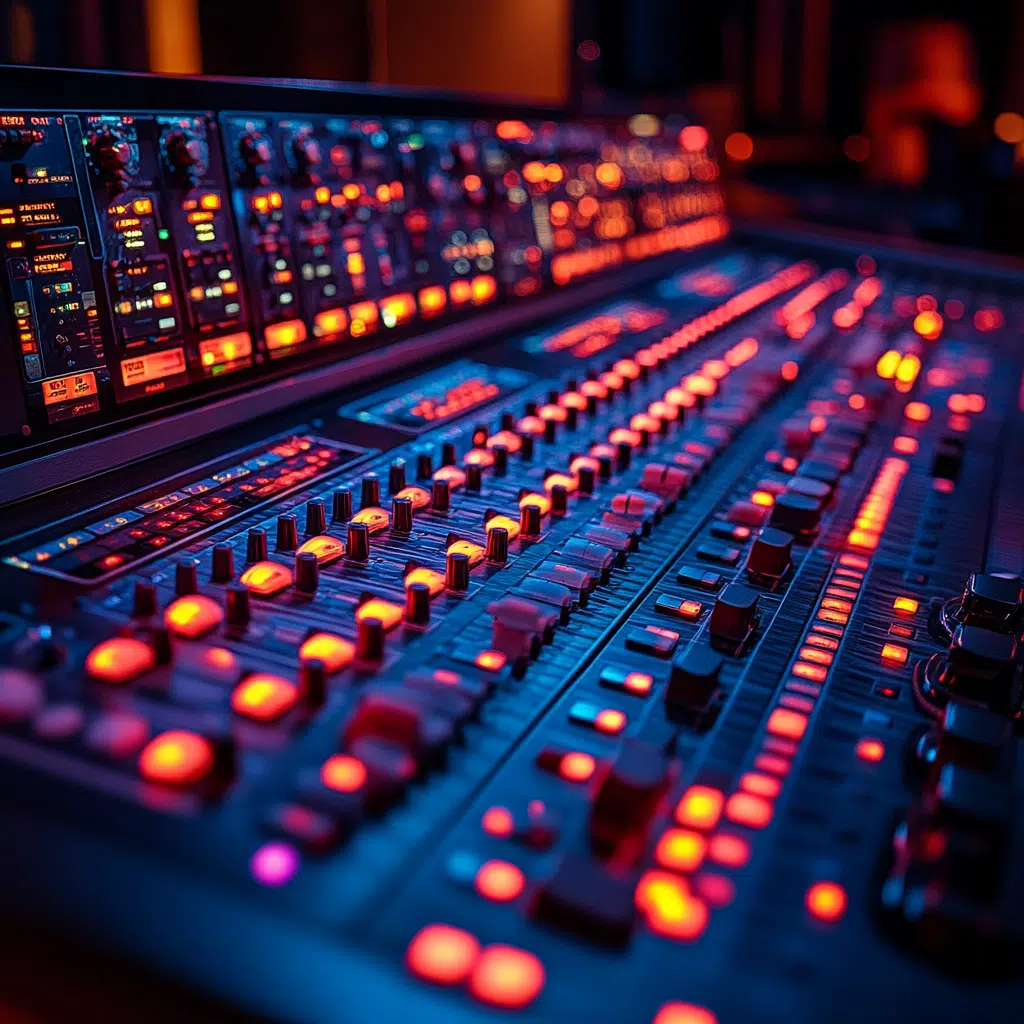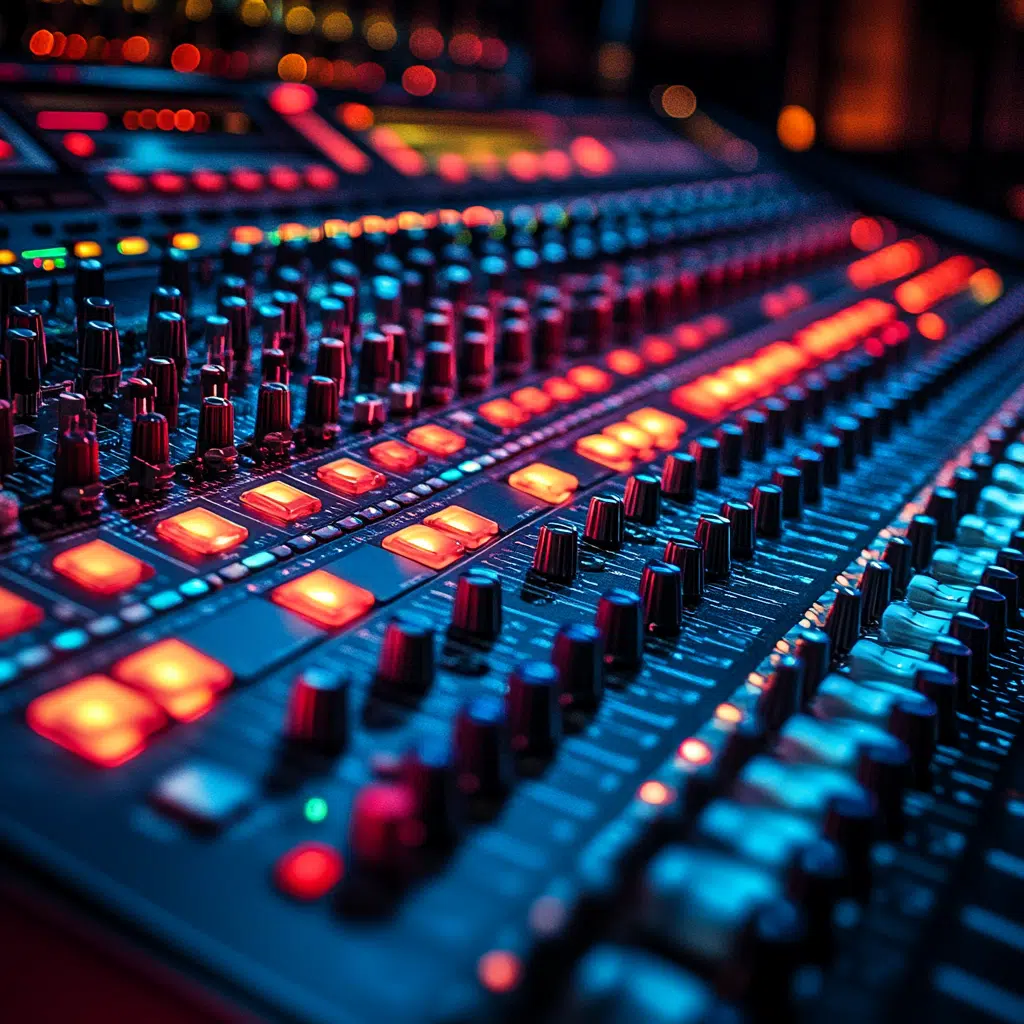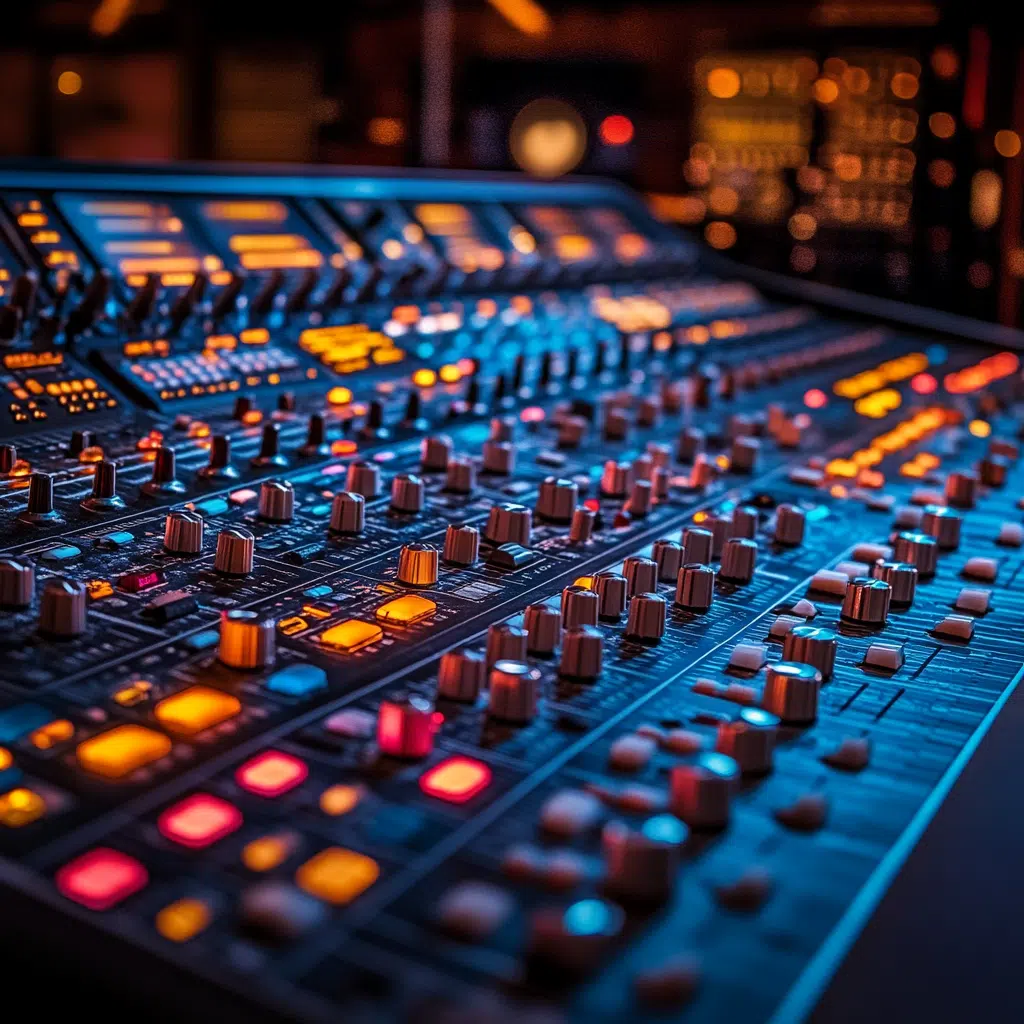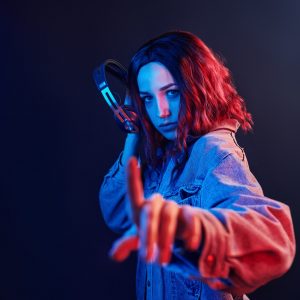In today’s fast-paced media industry, Remote Sound Design Services are a game-changer for filmmakers and producers. The blend of technology and creativity has transformed how sound is crafted, offering flexibility and cutting-edge solutions. Remote sound design services aren’t just a luxury; they’re essential for creating high-quality audio post-production. Whether you’re sculpting the soundscape for My Dress-up Darling Season 2 or diving into remote audio post-production, these services guarantee an unrivaled auditory experience.
The Rise of Remote Sound Design: Historical Context and Technological Advances
To comprehend the impact of these services, it’s crucial to glance at their past. Historically, sound design demanded in-person interactions, posing challenges like geographical hurdles and scheduling conflicts. Yet, today, tools like Pro Tools and Logic Pro have changed the game, allowing sound designers to craft soundscapes with unmatched accuracy. Technologies that make this possible enable creators to communicate seamlessly without the need for physical meetings. This technological leap reminds us of how Friends Home embraced digital innovations, showcasing new ways to connect and collaborate.
In today’s digital era, we’re also witnessing a surge in popularity for What Does contingent mean in real estate, resonating with how tech has redefined traditional practices. The rise of remote sound design aligns with these broader societal changes, marking another step in this ongoing narrative.
Noteworthy Projects Benefiting from Remote Sound Design Services
It’s no secret that remarkable productions have reaped the benefits of remote sound design. Take Stranger Things, for instance. By using remote techniques for sound design, it successfully captured the essence of the 1980s through a rich and genuine audio experience. Similarly, The Revenant leaned heavily on remote sound engineering to plunge audiences into the bone-chilling frontier, achieved by its adept sound crew.
Moreover, productions like Full-Time Magister have also tapped into these capabilities, enhancing its multi-faceted storytelling with evocative soundscapes. These examples underline how remote sound services help deliver unique narratives that captivate audiences globally.
| **Category** | **Details** |
|---|---|
| Work Environment | Sound designers can work in-house as part of a larger team or remotely from their home studio. Typically, they work 8-10 hour days. |
| Demand and Job Outlook | There are currently 21,800 sound designer jobs open. The number of jobs is projected to grow by 23% from 2021 to 2031 in the US. |
| Services Provided | Remote sound design services include audio post-production, sound editing, and original sound creation to match the specific project needs. |
| Distinction between Sound Editing & Design | Sound editing focuses on manipulating and arranging existing sounds for quality and continuity. Sound design involves creating new sounds to evoke emotions and enhance storytelling. |
| Technological Requirement | Remote sound designers need a professional-grade home studio setup, including hardware and software for sound editing and design. |
| Benefits of Remote Services | Flexibility in work hours, access to a global talent pool, potential cost savings on overhead, and continuity during unexpected disruptions. |
| Challenges of Remote Work | Potential communication delays, reliance on technology, and need for clear project briefings to ensure client satisfaction. |
Key Advantages of Using Remote Sound Design Services
- Access to Worldwide Talent: By going remote, filmmakers can team up with sound designers around the globe, gaining access to diverse auditory skills. Noteworthy music composers like Hans Zimmer and pioneers like Ben Burtt are known for leveraging remote tools to broaden their creative boundaries.
- Budget-Smart Solutions: By cutting the need for physical spaces and erasing travel costs, producers find they’re investing more efficiently. Films like Roma have flourished by adopting such streamlined remote workflows, enabling extensive post-production without the traditional studio expenditure.
- Unmatched Flexibility: Transitioning to remote services offers the agility needed to navigate across different time zones and shifting schedules. The sound crew of Game of Thrones leaned on this flexibility to satisfy the demands of its worldwide audience.
Remote Sound Design Technologies and Tools: An In-depth Analysis
Understanding the technology behind remote sound creation can illuminate its significance. Cloud-based platforms such as Splice and Avid’s Cloud Collaboration are central to audio production, allowing real-time editing and sharing of files. Meanwhile, WebRTC-based solutions streamline collaboration, transforming how directors and sound designers engage creatively. The rise of remote music mixing services offers a glimpse into the future, where real-time, remote collaborations set new standards.
Incorporating technologies like Dolby Atmos mixing toronto enhances the auditory experience further, creating immersive soundscapes that transport audiences directly into the heart of the narrative world.
Tips for Effective Remote Sound Design Collaboration
Ensuring the success of remote projects requires:
The Future of Remote Sound Design: Trends and Predictions
Looking forward to 2024 and beyond, the landscape of remote sound design continues to evolve. We expect AI-driven tools to further automate and elevate creative processes. Blockchain technology might emerge, offering transparent, secure project management across the globe.
Emerging technologies like augmented reality soundscapes and immersive 3D audio promise to expand the frontiers of auditory storytelling. As filmmakers harness these innovations, they find themselves armed with the unparalleled capability to create soundscapes that mesmerize a global audience.
As we stand on the cusp of these advancements, it’s clear that remote sound design services provide a crucial edge. This thriving field offers a unique opportunity to amplify narratives, ensuring every auditory detail resonates with profound impact. As such, it’s no surprise that sound design remains a sought-after skill, with increasing demand for sound designers projected in the years ahead.
Remote Sound Design Services: Enriching the Digital Soundscape
The Evolution of Remote Sound Design
Did you know the landscape for sound design has experienced a seismic shift in recent years? Indeed, Online Audio post Production has become a game-changer, making high-quality projects accessible from virtually anywhere. This revolution in audio services means even tattoo parlors in small towns—though primarily known for specializing in Tatuajes de Mujer—can( achieve cinema-quality sound engineering for promotional videos. Wild, right? With this technological leap, filmmakers and content creators no longer need to be tethered to on-site studios, saving time and cost while retaining creative freedom.
Fun Facts About Sound Design
Transitioning into the nitty-gritty, have you ever considered how crucial sound design is to a viewer’s experience? A single sound effect can completely alter an audience’s perception of a scene. It’s fascinating to think about how a squeaky door or the patter of rain can invoke a deep-seated emotional response. Often, these remotely crafted audios add a surprising depth to films, emphasizing mood and narrative intent wish such subtle finesse. There’s a world of potential here that many art creators might overlook—until they experience just what remote sound design services( can muster.
The Remote Future of Audio Mastery
Looking to the future, the boundaries of what can be achieved with remote sound design services continue to expand and diversify. Imagine you’re a director with a tight deadline and a story bubbling with potential. Enter remote service capabilities: suddenly, collaborating with a global suite of designers and mixers becomes feasible, bringing your vision to life without missing a beat. Consider this; researchers have noted this trend’s acceleration aligns closely with technology’s pace—perhaps even leading us to sound designs handled by AI in ways we haven’t yet imagined. Whether you’re mixing ambient sounds or creating electrifying sci-fi effects, remote solutions mean the world is quite literally your soundstage.
Do sound designers work remotely?
Sound designers often work remotely, which is great because it allows them to work from anywhere as long as they have the right equipment and a stable internet connection.
How much should a Sound Designer charge?
Sound designers usually charge between $50 and $150 per hour, which varies based on their experience and the project’s complexity. Project rates can differ depending on the type and scope of the work.
Is there a demand for sound designers?
Yes, there’s a high demand for sound designers. There are currently 21,800 job openings in the field, and the job market is expected to grow by 23% from 2021 to 2031.
What is the difference between a Sound Designer and a sound editor?
Sound editing focuses on arranging and improving existing sounds, while sound design involves creating new sounds to evoke emotions and enhance storytelling. Both are essential but play different roles in audio production.
What is the wage Sound Designer?
The typical wage for a sound designer can vary widely based on experience, location, and how specialized their skills are. For specifics, professional platforms or industry surveys are good places to check.
Where do sound designers get the sounds they use?
Sound designers get the sounds they use from a variety of sources, including recording real-world sounds, purchasing or downloading from sound libraries, and creating synthetic sounds using software.
What is the hourly rate for a freelance Sound Designer?
Freelance sound designers typically charge between $50 and $150 per hour. Rates can fluctuate based on experience and the project’s requirements.
What is the hourly rate for a sound editor?
Sound editors often have a similar hourly rate to sound designers, generally falling in the same $50 to $150 range depending on their expertise and project demands.
What is the sample rate for sound design?
A common sample rate for sound design is 48 kHz, which provides a good balance between audio quality and file size, especially important for video production.
Do sound designers need a degree?
Sound designers don’t necessarily need a degree, but formal education in music, audio engineering, or a related field can be beneficial. Skills and a strong portfolio matter most.
How to get started in sound design?
To get started in sound design, explore audio software, take courses in sound engineering, work on personal projects, or find internships to gain practical experience.
How do I market myself as a sound designer?
Marketing yourself as a sound designer involves creating a strong portfolio, networking, using social media platforms, and possibly creating a personal website to showcase your work and attract potential clients.
Who needs a sound designer?
A wide variety of industries need sound designers, including film, TV, video game production, advertising, and even event planning, anywhere that good sound can enhance the experience.
What is a sound designer called?
A sound designer is typically just called a “sound designer,” though sometimes they’re referred to as audio artists or sound creators in more specialized roles.
What program does sound designers use?
Sound designers frequently use programs like Pro Tools, Logic Pro, and Ableton Live, along with specialized software for sound effects creation like Adobe Audition or Izotope RX.
Can designers work remotely?
Yes, designers, including sound designers, can work remotely, which allows them flexibility in their work environment, whether freelancing or as part of a team.
How many hours does a Sound Designer work?
Sound designers usually work an 8-10 hour day, though this can vary based on project deadlines and workload.
Where would a Sound Designer work?
Sound designers can work in various settings, such as recording studios, film sets, or from home as a freelancer, depending on the project’s needs.
What are the working conditions for a Sound Designer?
Working conditions for a sound designer can vary but typically involve long hours at a computer with specialized software, requiring focus, creativity, and sometimes tight deadlines.



